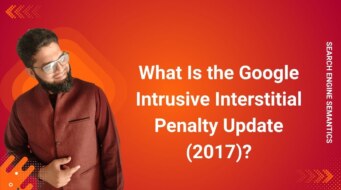What is Anchor Text?
Anchor text is the visible, clickable text in a hyperlink that appears on a webpage. It serves two key purposes:
It tells users what to expect when they click the link.
It helps search engines understand the context and relevance of the linked page.
In SEO, anchor text plays a vital role in signaling the topic of the destination page. Well-optimized anchor text can improve search engine rankings, distribute link equity, and enhance user experience.
Anchor Text Example (HTML Format)
- Anchor Text: “Learn more about SEO techniques”
- Destination URL: https://example.com/seo-guide
This example clearly tells both users and search engines what the linked page is about.
Types of Anchor Text (With Examples)
Understanding the different types of anchor text helps you craft smarter, more SEO-friendly links.
1. Exact Match Anchor
Includes the exact keyword or phrase you’re targeting.
Example:
<a href=”yourblog.com/seo-tips”>SEO tips</a>
2. Partial Match Anchor
Contains a variation or part of the target keyword.
Example:
<a href=”yourblog.com/seo-tips”>best practices for SEO</a>
3. Branded Anchor
Uses your brand name as the anchor.
Example:
<a href=”https://moz.com”>Moz</a>
4. Naked URL Anchor
Displays the URL itself as anchor text.
Example:
<a href=”https://ahrefs.com”>https://ahrefs.com</a>
5. Generic Anchor
Uses common phrases that don’t include keywords.
Example:
<a href=”yourblog.com/seo-guide”>Click here</a>
<a href=”yourblog.com/seo-guide”>Learn more</a>
6. Image Anchor
When you link an image, Google uses the image’s alt text as the anchor.
Example:
Why Anchor Text Matters in SEO!
1. Keyword Relevance
Google uses anchor text to understand what the linked page is about, influencing how it ranks in search results for specific keywords.
2. User Experience
Anchor text provides users with context and clarity, helping them decide whether to click the link or not.
3. Link Equity Distribution
Search engines use anchor text to pass relevance and authority (link juice) to the destination page, which impacts its SEO value.
4. Avoiding Penalties
Over-optimization—such as using exact match keywords in every link—can trigger Google penalties for unnatural link-building. A diverse anchor text profile is essential.
Anchor Text Mistakes to Avoid
Using too many exact match anchors (looks manipulative)
Overusing generic anchors like “click here”
Linking with irrelevant text
Using broken or misleading links
Anchor Text SEO Strategy Example
Let’s say you’re publishing a blog post about “Top 10 Email Marketing Tools” and want to link to your product review page.
Bad Anchor:
Click here
Good Anchor:
Check out our in-depth review of email marketing tools.
The optimized version helps search engines understand the topic and provides users with a reason to click.
Final Thoughts on Anchor Text
Anchor text is more than just clickable text—it’s a ranking signal, a user experience enhancer, and a trust-building tool. Whether you’re building backlinks, creating internal links, or auditing your SEO, crafting the right anchor text can significantly improve your visibility, engagement, and search rankings.
Want to audit your anchor text distribution? Tools like Ahrefs, SEMrush, and Google Search Console make it easy to monitor and optimize your link strategy.
Want to Go Deeper into SEO?
Explore more from my SEO knowledge base:
▪️ SEO & Content Marketing Hub — Learn how content builds authority and visibility
▪️ Search Engine Semantics Hub — A resource on entities, meaning, and search intent
▪️ Join My SEO Academy — Step-by-step guidance for beginners to advanced learners
Whether you’re learning, growing, or scaling, you’ll find everything you need to build real SEO skills.
Feeling stuck with your SEO strategy?
If you’re unclear on next steps, I’m offering a free one-on-one audit session to help and let’s get you moving forward.



